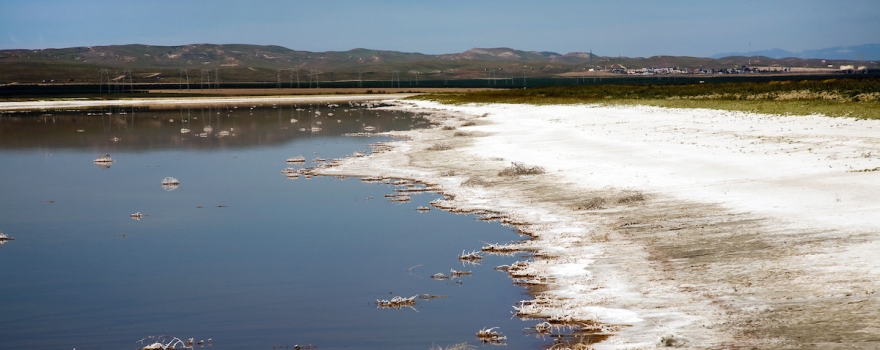From the State Water Resources Control Board:
The State Water Resources Control Board today approved an ambitious, long-term plan to address the buildup of salt and nitrates in Central Valley groundwater basins and surface water, and ensure delivery of clean drinking water to disadvantaged communities impacted by nitrates until impaired aquifers are restored.
Approved after more than 13 years in development by stakeholders and the Central Valley Regional Water Quality Control Board, the plan is the result of an unusual collaboration among agricultural interests, environmental justice advocates, water agencies and residents from impacted communities to address one of the region’s most challenging water quality problems.
“This plan is a better, more durable solution because it represents the work of diverse interests coming together to find common ground,” said State Water Board Chair E. Joaquin Esquivel. “Salinity and nitrate challenges are not unique to the Central Valley or California, but what is unique is the leadership, collaboration and creativity that led to development of this critical plan. Implementation is the real focus and challenge now. Further delay only increases the cost and harm to our communities.”
The buildup of nitrates in Central Valley groundwater, due largely to decades of irrigating and applying fertilizer to some of the nation’s most productive farmland, has made groundwater unsafe for consumption in many rural communities from Colusa to Kern counties. Dairies, wastewater treatment plants and other sources also contribute to nitrate contamination, which can be harmful to human health, particularly for infants.
The first goal of the Central Valley-wide Salt and Nitrate Management Plan is to provide safe drinking water to residents whose water supplies are contaminated with nitrates. Over the longer term, the plan requires farms, dairies and other sources to reduce nitrate discharges so they no longer contaminate groundwater. Ultimately, the goal is to clean up groundwater to meet water quality standards.
The plan allows groups of dischargers to form nitrate management zones and develop implementation plans to provide safe drinking water to impacted residents and implement measures to reduce nitrate pollution. The Central Valley Board would issue permits to ensure dischargers are meeting their goals.
In approving the plan, the State Water Board directed the Central Valley Board to return in one year with targeted revisions aimed at strengthening the plan. These revisions include:
- Strengthening requirements to reduce nitrate contamination of groundwater basins.
- Accelerating the timeline for achieving this goal. Dischargers will be required to reach this goal within as short a time as practicable, but not to exceed 35 years.
- Requiring enforceable interim deadlines and a final compliance date for dischargers to meet their goal of reducing nitrate discharges.
- Requiring residential sampling programs that provide water quality testing for residents whose water supplies may be contaminated.
Dischargers must identify a method for funding their implementation plans, including paying for replacement drinking water. They may seek funding from other public sources, including local, state and federal funds, but the dischargers are ultimately responsible for timely implementation of their plans.
In addition to addressing nitrate contamination, the Central Valley Board’s plan also requires dischargers to develop a comprehensive strategy for addressing their contribution to the buildup of salts in surface waters and groundwater in the Central Valley.
Development of the Central Valley-wide Salt and Nitrate Management Plan began in 2006 when the Central Valley Water Board initiated a collaborative stakeholder initiative, known as Central Valley Salinity Alternatives for Long-Term Sustainability (CV-SALTS).
Following input from stakeholders, state and federal agencies, and the public, the Central Valley Water Board adopted Basin Plan Amendments in May 2018 that implement the salt and nitrate management program across its three major basins – the Tulare Lake and the Sacramento and San Joaquin river basins.
A Basin Plan contains the regulations adopted by each of the nine regional water boards to control the discharge of waste and other controllable factors affecting the quality of waters of the state within the boundaries of the respective regional board. The Porter-Cologne Water Quality Control Act defines “waters of the state” to mean any surface water or groundwater, including saline waters.
The goals of the program are to sustain the Central Valley’s lifestyle, support regional economic growth, retain a world-class agricultural economy, maintain a reliable, high-quality water supply and protect and enhance the environment. To support the goals, the amendments include recommendations for new policies and regulatory strategies.
To learn more, visit the regional board CV-SALTS resource page.
——————————————–
Sign up for daily email service and you’ll always be one of the first to know!
- Sign up for daily emails and get all the Notebook’s aggregated and original water news content delivered to your email box by 9AM. Breaking news alerts like this one, too. Sign me up!
 Maven’s Notebook
Maven’s Notebook
constantly watching over the world of California water


